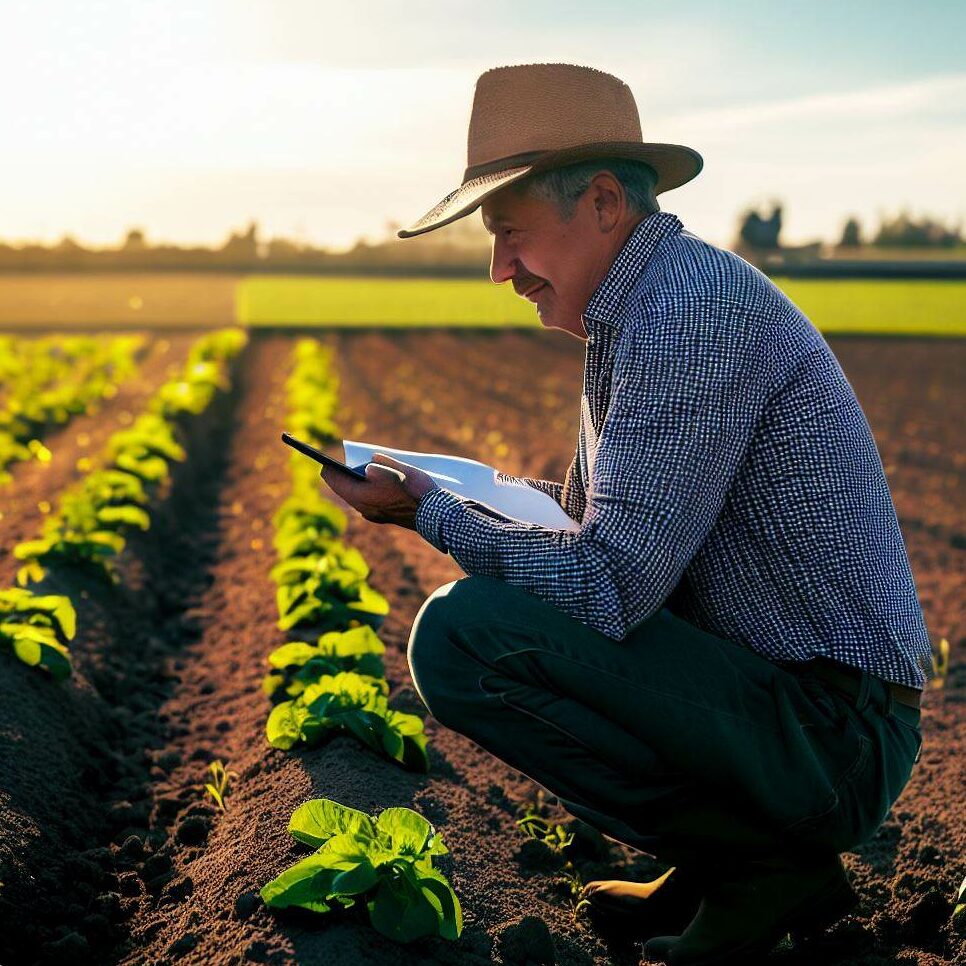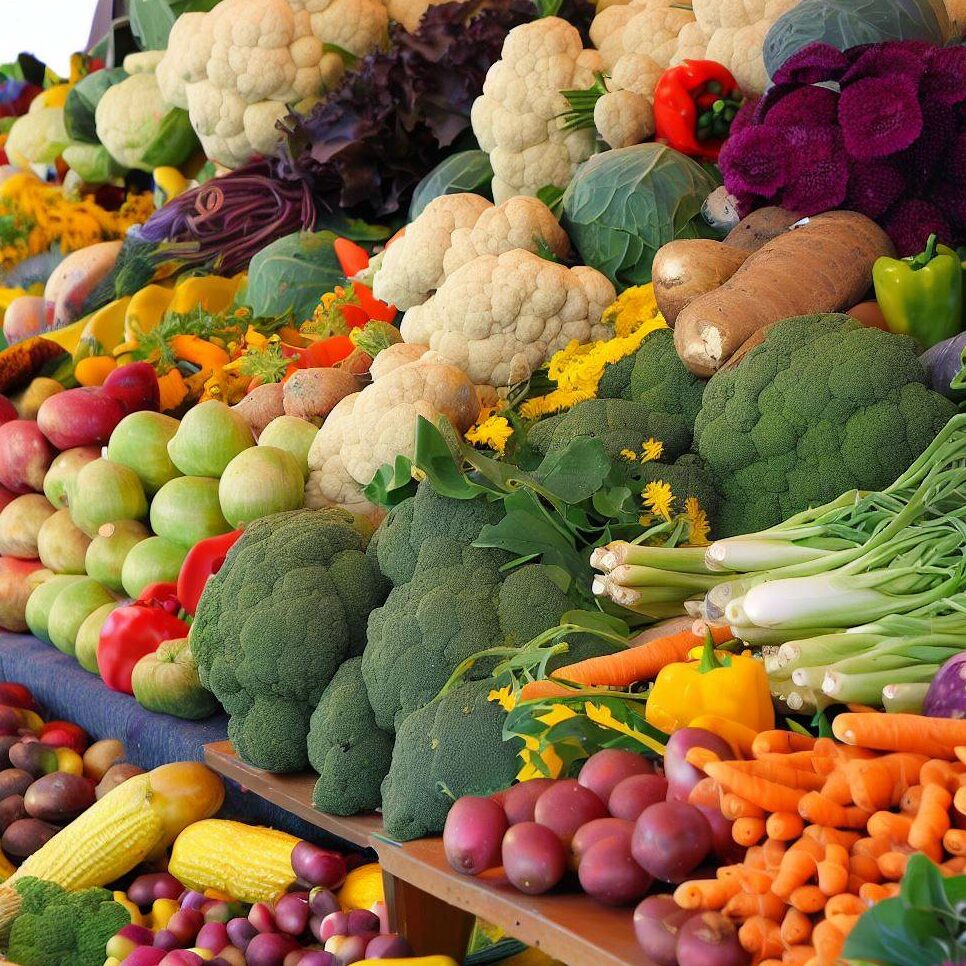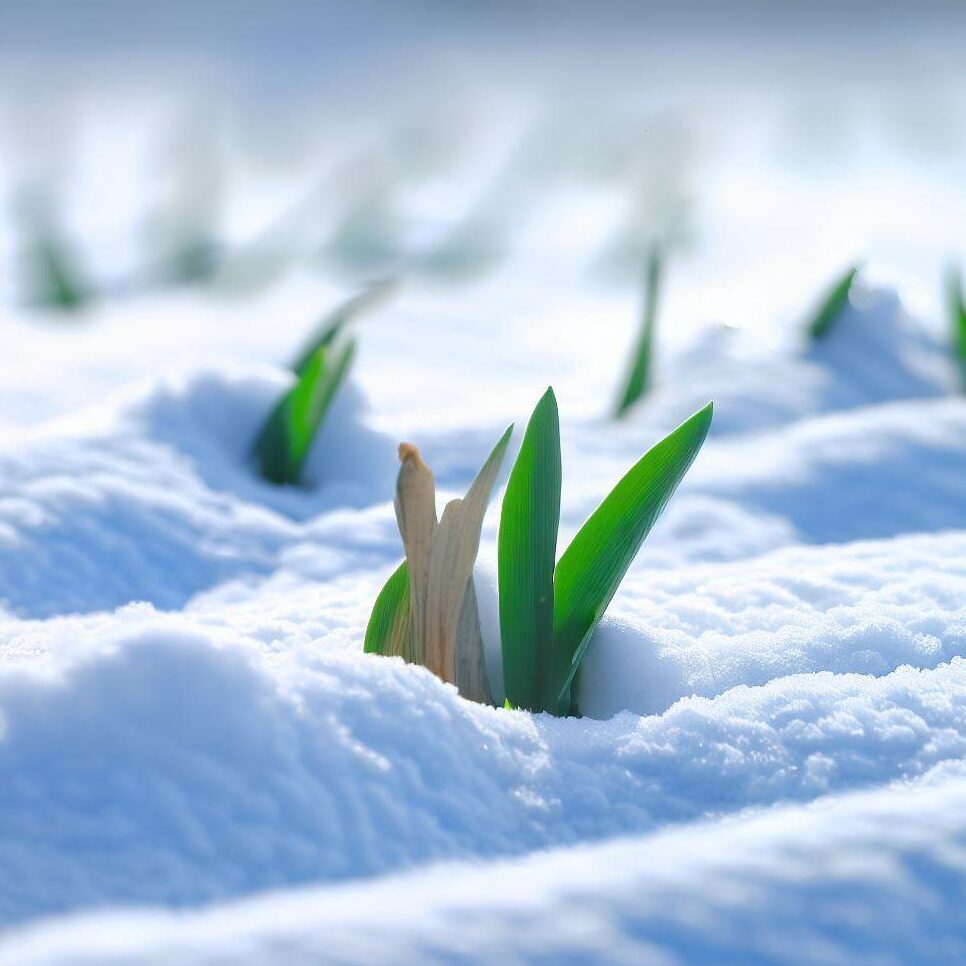Welcome to the world of crop rotation, a practice as old as agriculture itself, yet as relevant today as it was thousands of years ago. As a home gardener, I’ve seen firsthand the advantages of rotating crops. This practice can breathe new life into the soil and boost the health and yield of plants. But it’s not as simple as just planting different crops in a sequence. There are factors at play that can make or break the success of your crop rotation plan.
What are three factors that affect crop rotation? The three primary ones are crop diversity, geographic conditions, and the time interval between crops. Crop diversity refers to the variety of crops planted, which can affect soil nutrients and pest populations. Geographic conditions, such as soil type and climate, can determine which crops will thrive. Lastly, the time interval between crops is crucial in managing soil fertility and disrupting the life cycles of pests and diseases.

Let’s dig deeper into the three main ones:
- Crop Diversity: The variety of crops you choose to plant can significantly impact the success of your rotation.
- Geographic Conditions: The type of soil, the slope of your land, and the climate can all affect how well your crops grow. I’ve had my fair share of trial and error with this one, especially when I moved from a temperate to a tropical climate.
- Time Interval Between Crops: The length of time between planting different crops can also affect your crop rotation. I’ve found that giving my soil a good rest between certain crops can do wonders for its health and fertility.
🌾 Harvest Hint: Don’t be afraid to experiment with different crop combinations and time intervals. Every garden is unique, and what works for one might not work for another. The key is to observe, learn, and adapt. 🌾
What is Crop Rotation?
At its core, crop rotation is a systematic approach to deciding which crops to plant where in your garden or farm each season. It’s a strategic move, a chess game played with nature, where the goal is to maintain soil fertility and control pests and diseases.
A Journey Through Time
Crop rotation isn’t a new concept. It’s been around since ancient times, with early farmers recognizing the benefits of planting different crops in a sequence. They noticed that certain crops, like legumes, could replenish the soil, making it more fertile for the next crop. This practice evolved over centuries, with farmers and gardeners continually refining their methods to suit their specific conditions and needs.
As a gardening enthusiast, I’ve always been fascinated by this history. It’s a testament to the wisdom of our ancestors, who, without the aid of modern science, understood the importance of working with nature rather than against it.
The Three Field Crop Rotation Method
One of the most well-known methods of crop rotation is the three field system. This method involves dividing your land into three sections and planting different crops in each section. The crops are then rotated in the next planting season.
- Field One: This field is planted with a grain crop, like wheat or barley.
- Field Two: This field is planted with a legume crop, like peas or beans, which helps to replenish the soil’s nitrogen levels.
- Field Three: This field is left fallow, or unplanted, to allow the soil to rest and recover.
🌾 Harvest Hint: The three field system isn’t set in stone. Feel free to adapt it to your needs. For example, in my garden, I sometimes plant a cover crop in the fallow field to prevent soil erosion and add organic matter to the soil. 🌾
Understanding crop rotation and its history is the first step towards implementing it effectively in your garden or farm. It’s a practice that requires patience and observation, but the rewards are well worth it.
Advantages of Crop Rotation
Now that we’ve explored what crop rotation is and its historical context, let’s delve into the benefits it brings. From improving soil health to controlling pests, crop rotation offers a multitude of advantages that can enhance the productivity and sustainability of your garden or farm.
Three Key Advantages of Crop Rotation
So, what are the three main advantages of crop rotation? Let’s take a look:
- Improved Soil Health: Different crops have different nutrient requirements and contribute various organic matters to the soil. By rotating crops, you can balance the nutrient demands on your soil, preventing nutrient depletion. I’ve seen this in my garden where rotating legumes with other crops has significantly improved my soil’s nitrogen levels.
- Pest and Disease Control: Many pests and diseases are crop-specific. By changing the crops each season, you can disrupt the life cycles of these pests and diseases, reducing their impact. I remember a year when my tomatoes were attacked by a persistent pest. The following year, I rotated to a non-host crop, and voila, the pest problem was significantly reduced.
- Increased Crop Yield: Healthier soil and fewer pests and diseases can lead to higher crop yields. Plus, crop rotation can also reduce the risk of crop failure due to disease outbreaks. It’s always a joy to see my garden thriving after implementing a well-planned crop rotation.
🌾 Harvest Hint: Keep a garden journal to track your crop rotation and its effects. It can be a valuable tool for planning and improving your rotation strategy. 🌾

Principles of Crop Rotation
Understanding the principles of crop rotation can help you maximize these benefits. Here are a few key principles to keep in mind:
- Balance Nutrient Demand: Rotate between heavy-feeding crops and light-feeding crops to prevent nutrient depletion.
- Disrupt Pest and Disease Cycles: Avoid planting crops from the same family in the same area for consecutive seasons.
- Consider Crop Residues: Some crops, like legumes, leave beneficial residues that can be utilized by the next crop.
- Respect the Seasons: Some crops are cool-season crops, while others are warm-season crops. Plan your rotation accordingly.
Remember, the key to successful crop rotation is observation and adaptation. What works for one garden or farm may not work for another. So, observe your crops, learn from your experiences, and don’t be afraid to make changes as needed.
Factor 1: Crop Diversity
One of the key factors that affect crop rotation is crop diversity. The variety of crops you choose to plant plays a crucial role in the success of your crop rotation strategy. Let’s delve into how crop diversity impacts crop rotation and why choosing the right crops is so important.
The Role of Crop Diversity in Crop Rotation
Crop diversity refers to the variety of crops you grow in a specific area over a period of time. In the context of crop rotation, crop diversity is essential for several reasons:
- Nutrient Balance: Different crops have different nutrient requirements. By growing a variety of crops, you can balance the nutrient uptake and replenishment in your soil. For instance, legumes can fix nitrogen from the air, benefiting subsequent crops that need high nitrogen levels.
- Pest and Disease Management: Many pests and diseases are crop-specific. A diverse crop rotation can disrupt their life cycles, reducing their populations. I’ve found this particularly effective in managing pests in my vegetable garden.
- Soil Health: Different crops contribute different types of organic matter to the soil, improving its structure and fertility over time.
🌾 Harvest Hint: When planning your crop rotation, consider the nutrient needs, pest and disease susceptibility, and soil improvement potential of each crop. 🌾
Choosing the Right Crops
So, how do you choose the right crops for your rotation? Here are a few tips:
- Consider Your Soil: Some crops prefer sandy soil, while others thrive in clay soil. Choose crops that are suitable for your soil type.
- Think About Your Climate: Some crops are heat-loving, while others prefer cooler temperatures. Choose crops that can thrive in your local climate.
- Remember Your Market: If you’re farming for profit, consider the market demand for different crops. Choose crops that have a good market in your area.
Remember, a good crop rotation is one that balances the needs of the soil, the crops, and the farmer. It’s a dynamic process that requires observation, learning, and adaptation.

What Makes a Good Crop Rotation?
So, what makes a good crop rotation? A good crop rotation is one that improves soil health, manages pests and diseases, and increases crop yields, all while meeting the needs and goals of the gardener or farmer. It’s not a one-size-fits-all solution, but a flexible strategy that can be adapted to different situations and goals.
Factor 2: Geographic Conditions
The second factor that significantly influences crop rotation is geographic conditions. This includes elements such as soil type, slope, and climate. Each of these factors can have a profound impact on the success of your crop rotation strategy and, ultimately, your crop yields.
Soil Type and Crop Rotation
Soil type is a critical factor in crop rotation. Different crops have different soil requirements. Some crops thrive in sandy soil, while others prefer clay or loamy soil. Understanding your soil type can help you choose the right crops for your rotation and manage your soil health effectively.
For instance, in my own garden, I’ve found that root vegetables like carrots and beets do well in sandy soil, while leafy greens prefer rich, loamy soil. By understanding these preferences, I can plan my crop rotation to make the most of my garden’s soil conditions.
The Role of Slope and Climate
The slope of your land and the climate in your area also play significant roles in crop rotation. Slope affects water drainage and erosion, which can impact soil health and crop growth. Similarly, climate influences the length of the growing season, the types of crops you can grow, and the timing of your crop rotation.
In a hilly area, for example, you might need to consider terracing or contour plowing to prevent soil erosion. In a cold climate, you might need to include cover crops in your rotation to protect your soil during the long winter months.
🌾 Harvest Hint: Always consider your local geographic conditions when planning your crop rotation. It can make a significant difference in the success of your crop rotation strategy. 🌾
Geographic Conditions and Crop Yields
Geographic conditions can significantly impact crop yields. For example, a soil rich in organic matter and nutrients can support higher crop yields than a depleted soil. Similarly, a favorable climate can extend the growing season and increase crop productivity.
By understanding and managing your geographic conditions, you can optimize your crop rotation strategy and maximize your crop yields. Remember, successful crop rotation is not just about choosing the right crops, but also about managing your environment effectively.

Factor 3: Time Interval Between Crops
The third factor that plays a crucial role in crop rotation is the time interval between crops. This refers to the length of time that passes between the harvesting of one crop and the planting of the next. This interval can significantly impact the success of your crop rotation strategy.
Understanding the Time Interval
The time interval between crops is important for several reasons. First, it allows the soil to recover and replenish its nutrients. Second, it can help to break the life cycle of pests and diseases, reducing their impact on subsequent crops.
For example, in my own farming experience, I’ve found that leaving a longer interval between planting legumes and cereals helps to replenish the soil’s nitrogen levels, reducing the need for synthetic fertilizers. Similarly, leaving a gap between planting crops susceptible to the same pests can help to reduce infestations.
The Role of Well-Designed Crop Rotation
A well-designed crop rotation that takes into account the time interval between crops can significantly reduce the need for synthetic fertilizers and herbicides. This is because different crops have different nutrient requirements and pest resistance. By rotating crops effectively, you can make the most of these differences to maintain soil health and control pests naturally.
🌾 Harvest Hint: Consider the nutrient needs and pest resistance of your crops when planning your crop rotation. This can help you to choose the best time interval between crops. 🌾
Time Interval and Crop Rotation Success
The time interval between crops can significantly impact the success of your crop rotation strategy. Too short an interval might not allow the soil to recover fully, while too long an interval might leave the soil bare and prone to erosion. Finding the right balance is key to successful crop rotation.
Remember, successful crop rotation is a complex process that requires careful planning and management. By understanding and managing the time interval between crops, you can optimize your crop rotation strategy and maximize your crop yields.

The Impact of Crop Rotation
Having explored the factors that affect crop rotation and the benefits it brings, it’s important to understand the overall impact of crop rotation. This includes not only the environmental and agricultural impacts but also the economic aspects.
Environmental and Agricultural Impact
Firstly, crop rotation has a significant impact on the environment and agricultural productivity. By rotating crops, farmers can improve soil health, control pests, and increase crop yields. For example, in my own farming experience, I’ve seen how rotating legumes with cereals can improve soil nitrogen levels, reducing the need for synthetic fertilizers.
🌾 Harvest Hint: Remember, the impact of crop rotation on the environment and agricultural productivity can vary depending on the specific crops and rotation strategy used. 🌾
Economic Impact
Secondly, crop rotation can have a significant economic impact. By improving soil health and crop yields, crop rotation can increase the net profit per hectare. Furthermore, by reducing the need for synthetic fertilizers and pesticides, crop rotation can also reduce farming costs.
However, the economic impact of crop rotation can also be influenced by market prices. For example, if the market price of a particular crop is low, it might not be economically viable to include it in the rotation, even if it would be beneficial from an agricultural perspective.
In my own experience, I’ve found that careful planning and market research are key to maximizing the economic benefits of crop rotation. By choosing crops that are not only beneficial for the soil and pest control but also have a good market price, you can maximize your profits while also improving your farm’s sustainability.
In conclusion, the impact of crop rotation is multifaceted, affecting not only the environment and agricultural productivity but also the economic viability of farming. By understanding and managing these impacts, farmers can make the most of crop rotation to improve their farming practices and profitability.
Examples of Effective Crop Rotation Plans
Now that we’ve explored the factors that affect crop rotation, the benefits it brings, and its impact, let’s look at some practical examples of crop rotation plans. These examples are based on my own experiences and should serve as a starting point for your own crop rotation planning.
- Four-Year Plan: Year 1 – Legumes, Year 2 – Corn, Year 3 – Small grains, Year 4 – Hay or pasture. This plan helps to build soil fertility and control pests.
- Three-Year Plan: Year 1 – Corn, Year 2 – Soybeans, Year 3 – Wheat or other small grains. This plan is simple and can be effective in many climates.
🌾 Harvest Hint: Remember, the best crop rotation plan for you will depend on your specific circumstances, including your geographic conditions, crop diversity, and the time interval between crops. 🌾

Questions and Answers
Q: Can I use crop rotation in a small garden?
A: Yes, even in a small garden, changing where you plant certain crops each year can be beneficial.
Q: What is a cover crop?
A: A cover crop is a crop planted primarily to manage soil erosion, soil fertility, soil quality, water, weeds, pests, diseases, biodiversity and wildlife.
Q: How does crop rotation affect weed control?
A: Crop rotation can help control weeds by changing the conditions in which they grow.
Q: What is green manure?
A: Green manure is a type of cover crop that is grown and then incorporated into the soil to increase its organic matter content.
Q: How does crop rotation affect crop yield?
A: Crop rotation can increase crop yield by improving soil health and reducing pest and disease pressure.
Q: Can crop rotation help with water management?
A: Yes, some crops used in rotation can improve soil structure, leading to better water retention.
Q: What is the role of livestock in crop rotation?
A: Livestock can be used in crop rotation to graze on cover crops and provide natural fertilization through their manure.
Q: How long should I wait before planting the same crop in the same place?
A: This can vary, but a common rule of thumb is to wait at least two to three years before planting the same crop in the same place.
Conclusion
In our journey through the world of crop rotation, we’ve explored the three main factors that affect it: crop diversity, geographic conditions, and the time interval between crops. Understanding these factors is crucial for planning and implementing effective crop rotation strategies.
From my own experiences, I can tell you that the benefits of a well-planned crop rotation system are worth the effort. It’s not just about improving yields, but also about promoting sustainable farming practices that benefit our environment.
Remember, every field is unique, and the best crop rotation plan is the one that works for you and your land.
